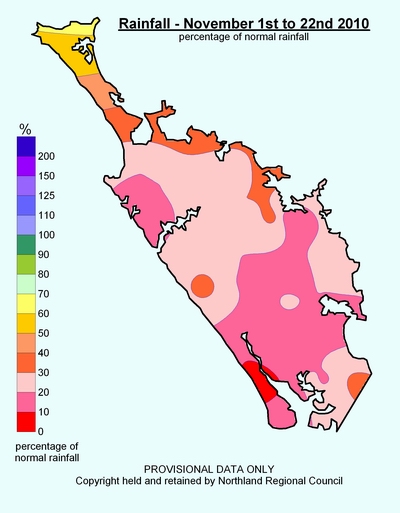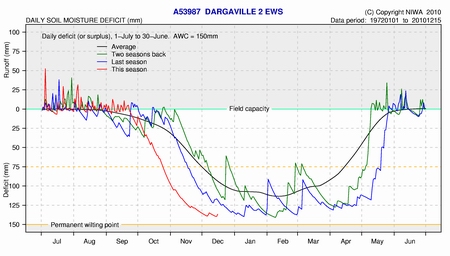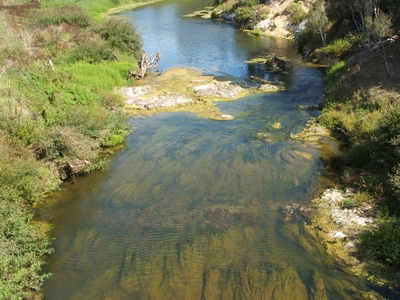Drought 2010/2011
Within this section…
From November 2009 to May 2010, Northland experienced a severe drought with rainfall amounts the lowest in the last 80 to 115 years. River flows were also the lowest in 40 to 50 years. As a result the economic, social and environmental impacts were severe and widespread.
By the time the drought had ‘broken' in May 2010, the regional rainfall deficit over the six months from November 2009 to May 2010 was 400mm. For the region's water resources to recover and to prevent severe drought conditions from re-occurring in 2010/2011, normal to above normal rainfall was required over the winter and spring months of 2010.
Drought progression
Rainfall during winter and spring of 2010 was quite variable. Generally, near normal to above normal conditions prevailed throughout winter. By early spring a moderate La Niña weather pattern was well-established in the tropical Pacific, and average to above average rainfall was expected until autumn 2011.
Despite this prediction, spring remained dry, with October and November rainfall amounts well below normal. Farmers were still recovering from last summer's drought and were now facing similar conditions.

Map - November 2010 rainfall amounts.
Soil moisture deficits and river flows were lower than at the same time in 2009, while ground water levels in the major aquifers such as Aupōuri, Kaikohe and Maunu were at or above the normal levels expected for that time of year.
River flows were expected to reach their five year drought low flows by early January 2011. The government once again declared a medium level drought zone for the whole of Northland in early December 2010.

Graph – Dargaville soil moisture deficits at mid-December 2010.
The Northland Regional Council issued more than 600 letters to consent holders, large industries taking water from bores, streams and lakes. These advised of potential water shortages and restrictions and the need to conserve water and plan for alternative supplies. Roading contractors were also advised.
Rivers in the Far North and western areas were the most effected. Many irrigators had to stop taking water from rivers because the levels were so low. Water conservation messages were distributed in the Far North and Kaipara districts. The Far North District Council put water restrictions in place. There was no requirement for water shortage directions to be issued during this period.
Drought management
Management was the same as for the previous year's drought. For more information visit www.nrc.govt.nz/amr
The Northland Drought Committee was re-established in December. The committee provided advice and support to farming families affected by the drought. Rainfall, groundwater and river levels were regularly reported to all major water users.
District councils were responsible for public water supply, demand management and water conservation strategies.
 Drought flows in the Wairua River.
Drought flows in the Wairua River.
Drought ‘broken'
The drought was ‘broken' when significant rain fell during the last week of January 2011 as the result of an ex-tropical cyclone moved into Northland bringing widespread rain.
Impacts on Northland
The effects of the drought were again severe and the impacts included:
· Production loss from dairy and livestock farming;
· Poor pasture cover, stock feed shortages;
· Poor condition of stock and animal health problems;
· Water supply shortages - rural, urban and irrigation;
· Stress, health and welfare;
· Financial losses and hardship;
· Extreme fire risk; and
· Environmental and ecological stress.
